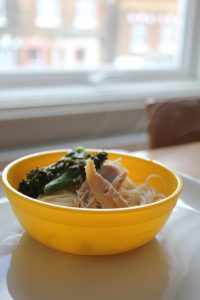
Wheat is one of the most common cause of food related allergy or intolerance, yet we have been eating it for thousands of years.
Wheat intolerance is not the same as coeliac disease or an allergy to gluten. Coeliac disease is an autoimmune disease whereby the body rejects gluten present in wheat, barley, rye and contaminated oats. It affects the lining of the small intestine and may have a genetic component. A strict gluten free diet for life is a very large aspect of the treatment for coeliac disease. If you suspect that you or your child may have coeliac disease, please speak to your doctor. For further information on coeliac disease, visit Coeliac UK’s website.
Wheat intolerance on the other hand is not as clearly understood. Again it is separate to wheat allergy whereby food allergies illicit an immune response whilst intolerances do not.
Intolerance to wheat may be characterised by abdominal pain, bloating, wind, diarrhoea or constipation in adults. In children typical symptoms may include irritability, poor temper, diarrhoea, weight loss and problems with growth. Symptoms may occur several hours after eating a food consisting of wheat. In some children and adults, symptoms may not occur until days after consuming the offending food. This can be frustrating as it may be difficult to pin point exactly which foods cause pain and discomfort without the expert guidance of a specialist dietitian.
You may have already consulted your child’s paediatrician who was not able to explain the cause of abdominal pain and other related symptoms. Skin prick tests and allergen specific IgE results may have been negative. You feel misunderstood and confused as the symptoms may have only surfaced recently. Unfortunately currently there is a lack of guidelines in managing children with non coeliac gluten sensitivity and wheat intolerance. The cross over in symptoms across coeliac disease, gluten sensitivity and wheat intolerance can also make diagnosis challenging.
From experience, the only way to know for sure is to exclude. An exclusion diet consists of excluding the troublesome foods (i.e. wheat) from your child’s diet for a minimum of 8 weeks. It is strongly recommended to follow these diets under the guidance of a specialist dietitian and only if it is truly necessary. Do it alone and you run the risk of needing to repeat the exclusion diet because you included hidden sources unnoticed. Inexperience with exclusion diets can also lead you to exclude the wrong foods without careful consideration to vital vitamins, minerals and macronutrients for your child.
Always seek advice from your child’s paediatrician and specialist dietitian before embarking on exclusion diets as such a diet may not even be necessary at all.
What to look for
The good news it that only a very small percentage of children suffer from wheat allergy and over half are thought to outgrow wheat allergy by the age of twelve. If a wheat free diet has been recommended did you know that wheat, rye and all foods containing these grains must be excluded as part of the exclusion diet? Did you also know that thickeners, edible starch and things like batter may contain wheat?
Always check processed meats, cheese spreads, breakfast cereals, ice cream, flavoured crisps, stock cubes, ketchup and salad creams to name a few.
Foods labelled as gluten free may not necessarily be wheat free, so always read the ingredient list to check for hidden sources of wheat.
If a doctor has recommended a wheat free exclusion trial for your child always ask a referral to a specialist paediatric dietitian. The dietitian can guide you safely on how to exclude and then re-introduce wheat back into the diet to confirm the intolerance or food related allergy.
If you have questions about following a wheat free exclusion diet, then feel free to post your thoughts below.
Recipe idea
Asian rice vermicelli is a useful wheat free alternative. It is excellent in stir fries and in soups. It also needs minimal cooking time, perfect for after school quick dinners. If your child has a wheat or gluten allergy always check ingredients very carefully. In wheat intolerance, a small amount may be tolerated but in allergy strict adherence to a free from diet is recommended for optimal symptom control.
Please comment below, I really look forward to and love, reading all of your comments!



3 thoughts on “Wheat intolerance or allergy?”
Very informative! There certainly is confusion between wheat allergy and intolerance. You have done a great job of explaining the difference between the two.
So interesting that kids may grow out of a wheat intolerance by 12 years, which is not the same for coeliac disease…
Great article highlighting the best way to identify Intolerances, which is best done with the help of a Dietitian especially in children